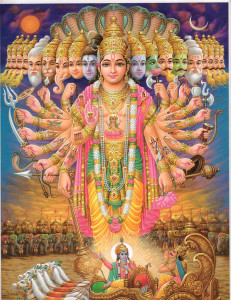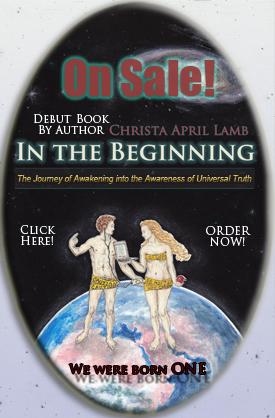Hinduism

Hindus believe in one God who is worshiped in many forms.
| Quick Facts | | History | | Symbols | | Sects | | Connection to other Beliefs | | Beyond Facts |
QUICK FACTS
Brief explanation:
Hinduism is considered the world’s oldest organized religion, although it has no date of origin or founder. It predates recorded history. Hinduism is a derivative of the word “Indian” and is made up of many different traditions, beliefs, and philosophies. Hindus believe in one Supreme Being, but worship other Gods as manifestations of the one Supreme being. In essence, Hinduism is not just a belief, but a way of life.
*Hindus believe:
o In a one, all-pervasive Supreme Being who is both immanent and transcendent, both Creator and Unmanifest Reality.
o In the divinity of the four Vedas, the world’s most ancient scripture, and venerate the Agamas as equally revealed. These primordial hymns are God’s word and the bedrock of Sanatana Dharma, the eternal religion.
o That the universe undergoes endless cycles of creation, preservation and dissolution.
o In karma, the law of cause and effect by which each individual creates his own destiny by his thoughts, words and deeds.
o That the soul reincarnates, evolving through many births until all karmas have been resolved, and moksha, liberation from the cycle of rebirth, is attained. Not a single soul will be deprived of this destiny.
o That divine beings exist in unseen worlds and that temple worship, rituals, sacraments and personal devotionals create a communion with these devas and Gods.
o In a one, all-pervasive Supreme Being who is both immanent and transcendent, both Creator and Unmanifest Reality.
o That an enlightened master, or satguru, is essential to know the Transcendent Absolute, as are personal discipline, good conduct, purification, pilgrimage, self-inquiry, meditation and surrender in God.
o That all life is sacred, to be loved and revered, and therefore practice ahimsa, noninjury, in thought, word and deed.
o That no religion teaches the only way to salvation above all others, but that all genuine paths are facets of God’s Light, deserving tolerance and understanding.
*From Himalayan Academy
Followers:
There are 900 million practicing followers in the world.
Hindus worship is know as the Puja. The Puja can be:
o Done in home, public space or in a temple.
o A daily ritual or done on special holiday.
o Offering to various Gods/Goddess, distinguished persons, or special guests.
o Done is front of the image of the God/Goddess.
o Done by the worshiper, purified person, or Priest.
o Giving offerings of fruits, nuts, or sweets which is blessed by the God/Goddess before being eaten.
o A ritual that could consist of bathing, dressing, and serving three meals during the day, and putting the important guest or God/Goddess to bed.
HISTORY
History gathered, collected and provided by the owner of Religion Facts.com
Our sincere thanks for their permission.
Hinduism is unique among the world religions in that it has no founder or date of origin. While most major religions derive from new ideas taught by a charismatic leader, Hinduism is simply the religion of the people of India, which has gradually developed over four thousand years. The origins and authors of its sacred texts are largely unknown.
Although today’s Hinduism differs significantly from earlier forms of Indian religion, Hinduism’s roots date back as far as 2000 BC, making it one of the oldest surviving religions. Because of its great age, the early history of Hinduism is unclear. The most ancient writings have yet to be deciphered, so for the earliest periods scholars must rely on educated guesses based on archaeology and the study of contemporary texts.
In the last few decades, the history of India’s religion has also become a matter of political controversy. The history of any nation (or individual) is an important part of its self-identity, and this is especially true of India, which so recently gained independence after centuries of colonial rule. The controversy over India’s history centers on the origin of the Aryan culture, as we shall see in more detail below.
The Indus River Valley Civilization
In 1921, archaeologists uncovered evidence of an ancient civilization along the Indus River, which today runs through northwest India into Pakistan. The so-called Indus Valley civilization (also known as the “Harappan civilization” for one of its chief cities) is thought to have originated as early as 7000 BC and to have reached is height between 2300 to 2000 BC, at which point it encompassed over 750,000 square miles and traded with Mesopotamia.
Some writings of this period has been discovered, but unfortunately in such small amounts that they have yet to be deciphered. Knowledge of this great civilization’s religion must therefore be based on physical evidence alone. Baths have been found that may indicate ritual bathing, a component of modern Hinduism. Some altar-like structures may be evidence of animal sacrifice, and terracotta figures may represent deities. An important seal features a horned figure surrounded by animals, which some conjecture is a prototype of Shiva, but it could be a bull parallel to that found on Mesopotamian seals.
The Controversial Aryans
The Indus Valley culture began to decline around 1800 BC, due possibly to flooding or drought. Until recently, it was held that the Aryans (an Indo-European culture whose name comes from the Sanskrit for “noble”)[3] invaded India and Iran at this time. According to this hypothesis, both the Sanskrit language and the Vedic religion foundational to Hinduism is attributable to the Aryans and their descendants. The original inhabitants of the Indus Valley are thought to have had a Dravidian language and culture, which became subordinate to that of the invading peoples.
Proponents of this hypothesis point to similarities between Zoroastrianism (the ancient religion of Iran) and the Vedic religion of ancient India, as well as similar finds in ancient cemeteries in modern-day India and Tajikistan and Uzbekistan. In addition, no trace of horses or chariots have been found in the remains of the Indus Valley culture, but were central to Aryan military and ritual life.
Since the 1980s, this “Aryan Invasion” hypothesis has been strongly challenged as a myth propagated by colonial scholars who sought to reinforce the idea that anything valuable in India must have come from elsewhere. Critics of the hypothesis note that there is lack of evidence of any conquest, among other historical and archaeological problems.
One alternative hypothesis is explained by Encyclopædia Britannica as follows:
Between about 2000 and 1500 BCE not an invasion but a continuing spread of Indo-Aryan speakers occurred, carrying them much farther into India, to the east and south, and coinciding with a growing cultural interaction between the native population and the new arrivals. From these processes a new cultural synthesis emerged, giving rise by the end of the 2nd millennium to the conscious expressions of Aryan ethnicity found in the Rigveda, particularly in the later hymns.[4]
The 19th-century Aryan Invasion theory has generally been abandoned as inaccurate, but most scholars do not reject the notion of some outside influence on the Indus Valley civilization. For many, it is a political issue as well as a historical one, with the original theory is regarded as racist and offensive. BBC Religion & Ethics summarizes the matter this way:
Many people argue that there is now evidence to show that Muller [original proponent of the hypothesis], and those who followed him, were wrong. Others, however, believe that the case against the Aryan invasion theory is far from conclusive. The matter remains very controversial and highly politicised.[5]
The remainder of this article is under construction.
References:
“History of Hinduism.” Encyclopædia Britannica (Encyclopædia Britannica Premium Service, 2004).
“Indian Religions and the Hindu Tradition” The Cambridge Illustrated History of Religions (Cambridge University Press, 2002).
“Aryan.” Encyclopædia Britannica (Encyclopædia Britannica Premium Service, 2009).
“India » History » India from the Paleolithic Period to the decline of the Indus civilization » Post-Harappan developments » The appearance of Indo-Aryan speakers.” Encyclopædia Britannica (Encyclopædia Britannica Premium Service, 2009).
“Hinduism: History: Aryan Invasion Theory” – BBC Religion & Ethics
External Links
Indus Valley Civilization – Wikipedia
Indo-Aryan migration – Wikipedia
The Myth of the Aryan Invasion of India by David Frawley, hosted at Hindunet.org
SYMBOLS
Coming soon!
*SECTS
Saivism
Saivite Hindus worship the Supreme God as Siva, the Compassionate One. Saivites esteem self discipline and philosophy and follow a satguru. They worship in the temple and practice yoga, striving to be one with Siva within.
Shaktism
Shaktas worship the Supreme as the Divine Mother, Shakti or Devi. She has many forms. Some are gentle, some are fierce. Shaktas use chants, real magic, holy diagrams, yoga and rituals to call forth cosmic forces and awaken the great kundalini power within the spine.
Vaishnavism
Vaishnavites worship the Supreme as Lord Vishnu and His incarnations, especially Krishna and Rama. Vaishnavites are mainly dualistic. They are deeply devotional. Their religion is rich in saints, temples and scriptures.
Smartism
Smartas worship the Supreme in one of six forms: Ganesha, Siva, Sakti, Vishnu, Surya and Skanda. Because they accept all the major Hindu Gods, they are known as liberal or nonsectarian. They follow a philosophical, meditative path, emphasizing man’s oneness with God through understanding.
*From Hinduism Today
CONNECTION TO OTHER BELIEFS
Links to some great pages comparing Christianity to other religions:
Wikipedia
Christianity compared to Hinduism
Hindu Website
Hinduism compared to Islam
Religious Tolerance
Christ Krishna Connection
Christ Krishna Similarities
BEYOND FACTS
A video introduction to Hinduism:
Bhagvad Gita Introduction in English (krishna’s message to the world)
Read the whole book. Order it now!The Bhagavad-Gita: Krishna’s Counsel in Time of War at Amazon.com









